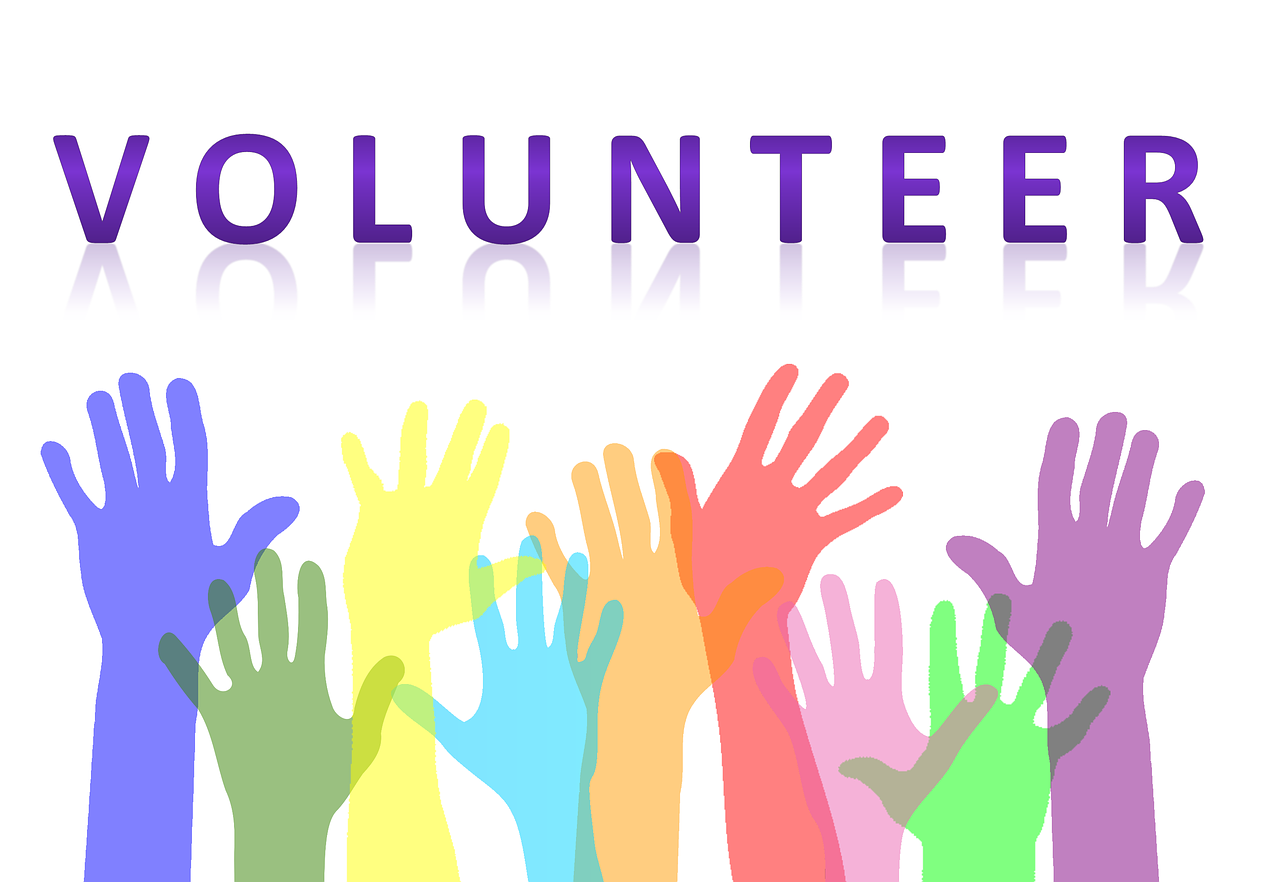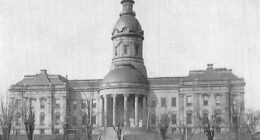Publisher’s Note: This story is part of the SoJo Exchange from the Solutions Journalism Network, a nonprofit organization dedicated to rigorous reporting about responses to social problems. 1808Delaware is pleased to share these stories from time to time with permission.
By Linda Poon, City Lab
When the pandemic shut down schools in March, it created a new urgency to narrow the digital gap in the U.S. as millions of students struggled to participate in remote learning because they didn’t have internet access at home. It also reinforced the reality that the divide doesn’t just exist between rural and urban communities, but also within America’s largest cities. Some 500,000 households lack reliable connection in New York City, for example; in Chicago, 1 in 5 students don’t have broadband, according to data published at the start of the pandemic.
As many local governments have scrambled to secure internet access for children in virtual school, some policies could last past the pandemic. One popular approach in cities like Washington, D.C., and Chicago has been providing low-cost or free service to families who can’t afford a broadband subscription, and the tech devices to go with them. Some measures are currently set up to last only a year, while others, like Chicago’s, will continue for several years. Recognizing that the digital divide will persist after the pandemic, digital inclusion advocates say there is a need for more permanent solutions.
One approach that’s gained traction is for local communities to play a direct role in providing internet service — in many cases by building their own or relying on their own infrastructure.
“The options in front of them looking at the affordability barrier were to pay for existing service — cellular through hotspot, or wireline — or build something,” says Angela Siefer, executive director of the National Digital Inclusion Alliance. “And I think the the folks who went with the build-it solution are the ones thinking, ‘This problem isn’t going away after the pandemic.’”
Municipal broadband
Establishing a municipal network to cover an entire city isn’t new; Chattanooga, Tennessee, was the first to accomplish this in 2010. The local government installed its own fiber-optic cables on streetlights across the city, serving not just residents but also businesses that were seeking a more reliable and speedy grid than was previously available. But the city-run initiative set off both legislative and legal challenges that have barred Chattanooga from expanding its network to neighboring jurisdictions — and muted the movement to bring similar ideas to other U.S. cities.
As of 2020, 22 states have laws that deter or even prohibit local governments and communities from establishing their own networks, according to the group Broadband Now. They’re in large part the result of lobbying from commercial providers who argue the laws are necessary to prevent unfair competition. Siefer says they continue to restrict communities from connecting everyone in need.
This year in a number of cities, the pandemic has inspired some narrower versions of municipal broadband that get around these restrictions, focused on creating “affordable networks” that specifically target low-income households. Several of these were born out of the immediate need to bridge the homework gap.
“Pre-Covid there were at most a handful of networks being built to address affordability; now, we’ve started informally keeping a list and we’re over 30,” Siefer says. “The phenomena of setting up a network for that reason, in that way, is new.”
The concept is simple: “Basically try to offer free connectivity in areas that are heavily populated by people who cannot afford the connections that are available,” says Chris Mitchell, director of the Community Broadband Networks Initiative with the Institute for Local Self-Reliance. The methodology varies, but often, these solutions aim to set up a system that can address the affordability barrier well beyond the pandemic.
In some cases, they rely on infrastructure the city has already built out. Chattanooga, for example, used its pre-existing network to provide low-income students with free internet access after the pandemic began.
San Antonio, Texas, where more than 38% of households lack in-home internet access, also relied on pre-existing infrastructure. The municipally owned utility had years ago built an extensive network of fiber-optic cables that delivered internet to government buildings and community centers like schools and libraries, and when those centers closed — leaving underserved students in the lurch — the city decided to use $27 million in CARES Act funds to expand that network to the homes of some 20,000 students across the city’s 50 most vulnerable neighborhoods.
Antennas from those school buildings will send internet signals to receivers fixed to students’ homes and apartment buildings where the city’s fiber cables don’t reach. The initial phase of the project focuses on six of those neighborhoods near two high schools where more than half of the student population live in homes without internet access. Over the next eight months to two years, the city plans complete the expansion to all 50 neighborhoods.
Because of a Texas law that restricts local government telecom networks, the city likely wouldn’t be able to expand the service to a broader population without reform. “In San Antonio, that network is only available to students because there’s a state law that says that the city can’t be in competition with commercial providers,” says Siefer.
The wireless approach
While equipping homes with wireline broadband is typically thought of as the gold standard, few cities have the infrastructure ready. In the absence of an extensive network of municipal-owned cables, some communities are establishing wireless networks to connect low-income students to free or low-cost internet.
One such initiative is the Every1online program in the Pittsburgh metro area, a 12-month pilot project aiming to connect at least 450 families and low-income school children to high-quality internet, for free. Spearheaded by the nonprofit internet provider Meta Mesh Wireless Communities, with partners like Carnegie Mellon University and the University of Pittsburgh, the program uses antennas mounted on top of tall structures to beam internet signals to the homes of residents in Homewood — one of the city’s poorer neighborhoods — and of low-income school children in the nearby New Kensington and Coraopolis school districts.
Connecting communities through mesh wireless networks isn’t new, but Every1online is one of the new initiatives born out of the pandemic to target low-income families. After the pilot ends, school districts have the option to purchase service for students in need — a model that organizers hope to expand in the future. (Pennsylvania’s law prohibiting city governments from setting up their own network does not apply to nonprofits.) Rather than connect individual households to the internet, the nonprofit hopes to partner with school districts and other community groups in underserved neighborhoods to set up a network for multiple families in a concentrated area.
In a newer strategy made possible only recently, a handful of school districts from California to Texas to Utah have begun leveraging a band of wireless spectrum known as Citizen Broadband Radio Service (CBRS) to establish high-speed wireless networks for students. Unlike other bands that are allocated for private use, the Federal Communications Commission made some of the CBRS band publicly available in early 2020 so anyone, including local governments, can access it. It also sits in a sweet spot on the spectrum range that makes it useful for offering relatively high-speed connection with enough coverage for a small area.
One of the first to test the technology is the Fontana Unified School District in California, where more than half of students lack reliable internet at home. In April, the district launched a five-year initiative to build out a private wireless network for some 36,000 students. Partnering with the network infrastructure provider Crown Castle Fiber, the district will install about 400 “access points” that will transmit signals to thousands of Wi-Fi hotspots near students’ homes, which can then be used to connect school-provided devices to the internet.
The initiative does come with a hefty price tag of $40 million, with Crown Castle paying most of the upfront costs. But in an interview with New America, Fontana superintendent Randal Bassett called it more cost-effective than paying for subscription service from an existing carrier. In the long run, the infrastructure can be expanded to cover more households and be used for other city services such as digitally connected infrastructure.
Experts like Mitchell and Doug Brake, director of broadband and spectrum policy at the Information Technology and Innovation Foundation, say they are cautiously optimistic about the potentials of CBRS. It could be a game changer for municipalities, but it’s a finite resource with a lot of uncertainty about how it will scale.
“It’s an exciting technology, but it’s also not clear to me that there is enough spectrum yet to be able to ensure that you can provide high-quality service,” Mitchell says. adding that students living in an apartment building could experience different speeds than a peer living in a single-family home. “One of the things I really hope the FCC does is create more spectrum that would be available to be shared in this way because I would worry that in many cities, it might be exhausted and congested very quickly.”
Other options
Brake says it might be redundant and costly for some cities, particularly those that are cash-strapped, to build their own system using CBRS when there are other private-sector providers with already-established infrastructure. It “opens up new opportunities, so I am excited to see how it plays out,” he says. “But I don’t think a good tool to be building an entire network on, especially where there’s such a competitive market already providing services.”
He suggests other options ranging from using Wi-Fi hotspots, as some communities have done around closed libraries or on school buses, or partnering with private providers, as Chicago has done.
How communities choose to bridge the gap ultimately depends on their needs and resources. With schools fully remote and an estimated 100,000 students lacking internet access in Chicago, the city chose to partner with major broadband providers to fill in the immense gap — though not before conducting an extensive survey on who needed access the most. The $50 million Chicago Connected initiative, which launched in June, is expected to provide low-income students free internet for at least the next four years, with funding from the CARES Act and, more crucially, from a handful of private donors. The money will be paid directly to Comcast and RCN so that families will not be charged, according to Chalkbeat.
Some major cable companies have also started partnering with cities and offering cheaper plans to low-income customers, though families and officials have complained of sluggish speeds.
What’s next
It’s no surprise that distance learning has prompted local governments to take more aggressive action on digital access, but going forward, expanding current solutions to a broader community will be a monumental task that will require more involvement from the federal government.
Congress has made digital equity a higher priority since the pandemic began. In December, it included $3.2 billion in its Covid relief package to fund a $50-per-month emergency broadband subsidy for those laid off or furloughed during the pandemic — part of the $7 billion set aside for advancing broadband connectivity and infrastructure.
But Siefer says solutions need to address all barriers, including the uneven access to devices and the lack of digital literacy among some communities. Advocates are not only calling for more funding, but also more informational and political support. Better data would be a good start, says Siefer: “For example, there is no widespread data on the cost of broadband service in the U.S. because internet service providers don’t want their data out there. But the FCC should be collecting it and making it publicly available so that communities can make informed choices when they’re figuring out how to address the problem.”
The effort also calls for policy reforms, in particular one that would prohibit states from restricting municipal networks and other community initiatives. In 2019, the Community Broadband Act introduced in the House of Representatives sought to do just that, but has not been debated. With a new administration, and new control of Congress by Democrats — as well as the appointment of senior FCC commissioner Jessica Rosenworcel, who’s been vocal about digital inequality, as the agency’s new acting chairman — there is cause for cautious optimism among advocates.
For their part, commercial carriers, too, are looking to address the gaps. Mobile carriers T-Mobile and Verizon are looking to enter the home broadband market. Both companies offer limited home internet service use their wireless 4G networks, which they advertise as being fast enough to be cheaper alternatives to cable internet. So far, coverage is spotty. Both are also working to bring the highly coveted and blazing fast 5G service to homes, with T-Mobile planning to focus its initial rollout in rural areas.
Such plans still leave some digital inclusion advocates skeptical about relying on the private sector to bridge the divide. “My questions would be, will there be data caps and what’s the price point?” says Siefer. She points to Starlink, a satellite internet service from Elon Musk’s Space X that was awarded nearly $900 million in December from the FCC to boost service to rural residents. (Former FCC Chairman Ajit Pai touted the awards as the “single largest step ever taken to bridge the digital divide.”) The upfront cost for a subscription totals nearly $600 — $500 for the equipment and $99 a month for service.
“Might that change later? Yes. Might T-Mobile, Verizon and the rest of them come up with some other great solutions later? Yes,” Siefer says. “But until these things are real, people are suffering and there need to be solutions now.”
Original post can be read here.










